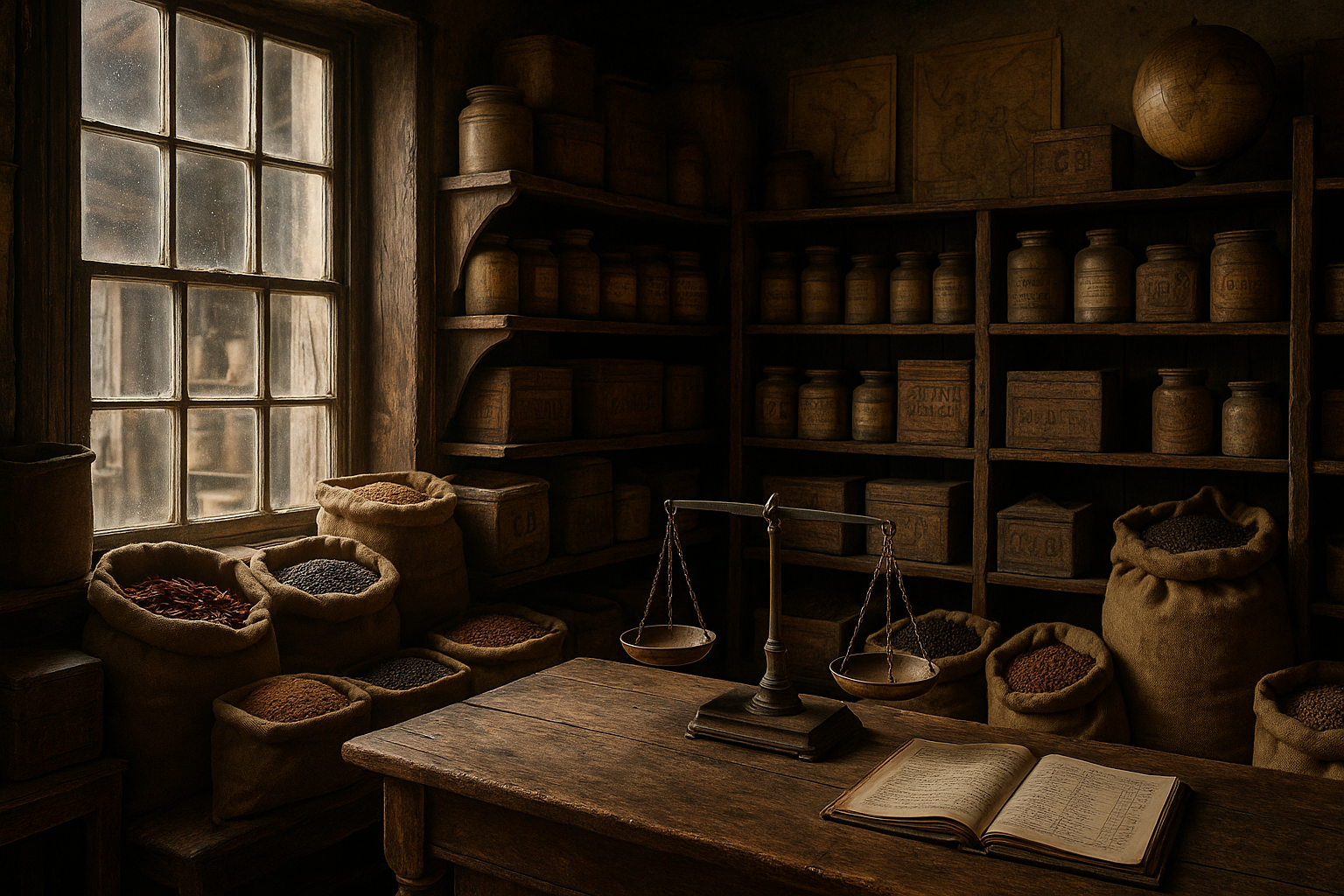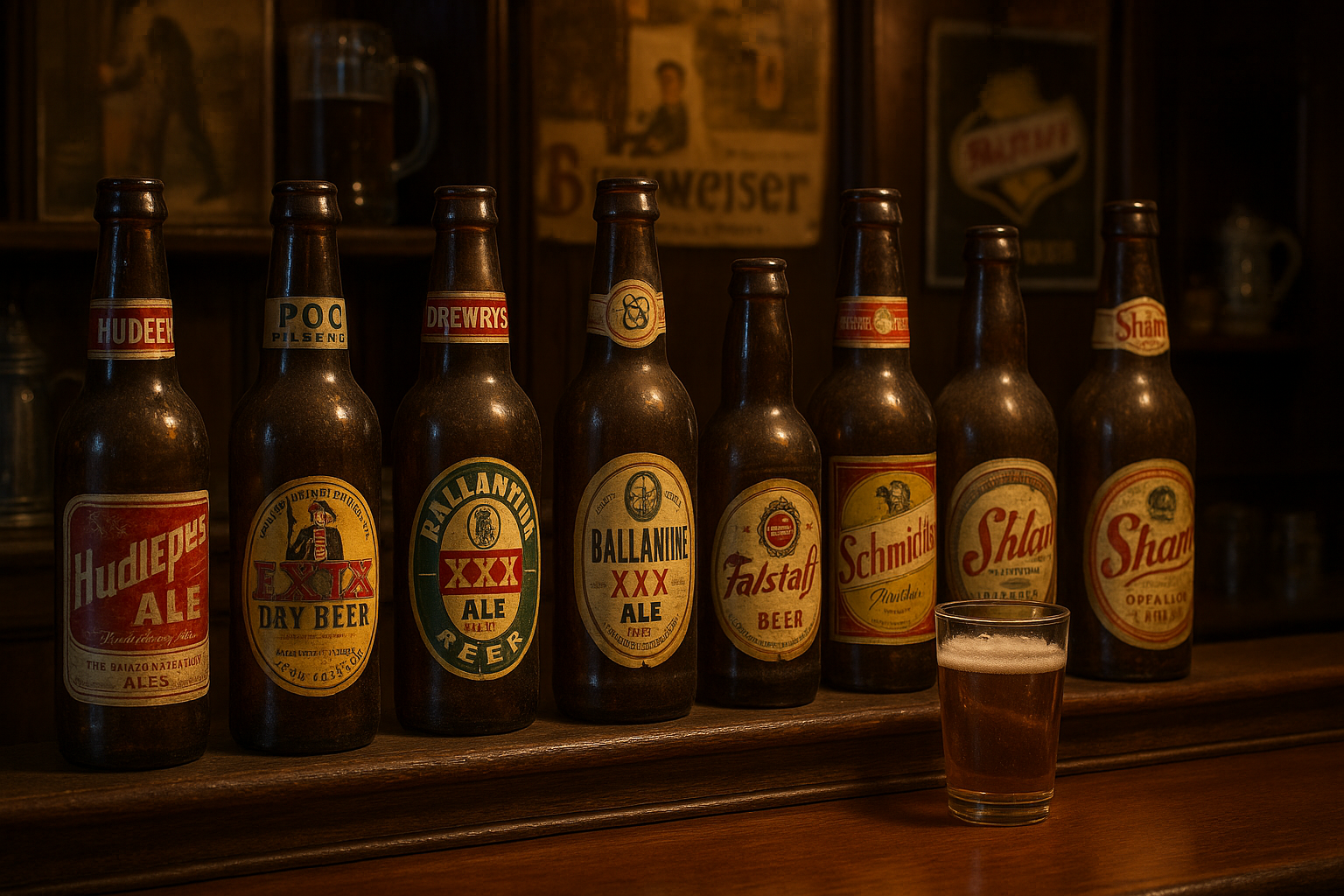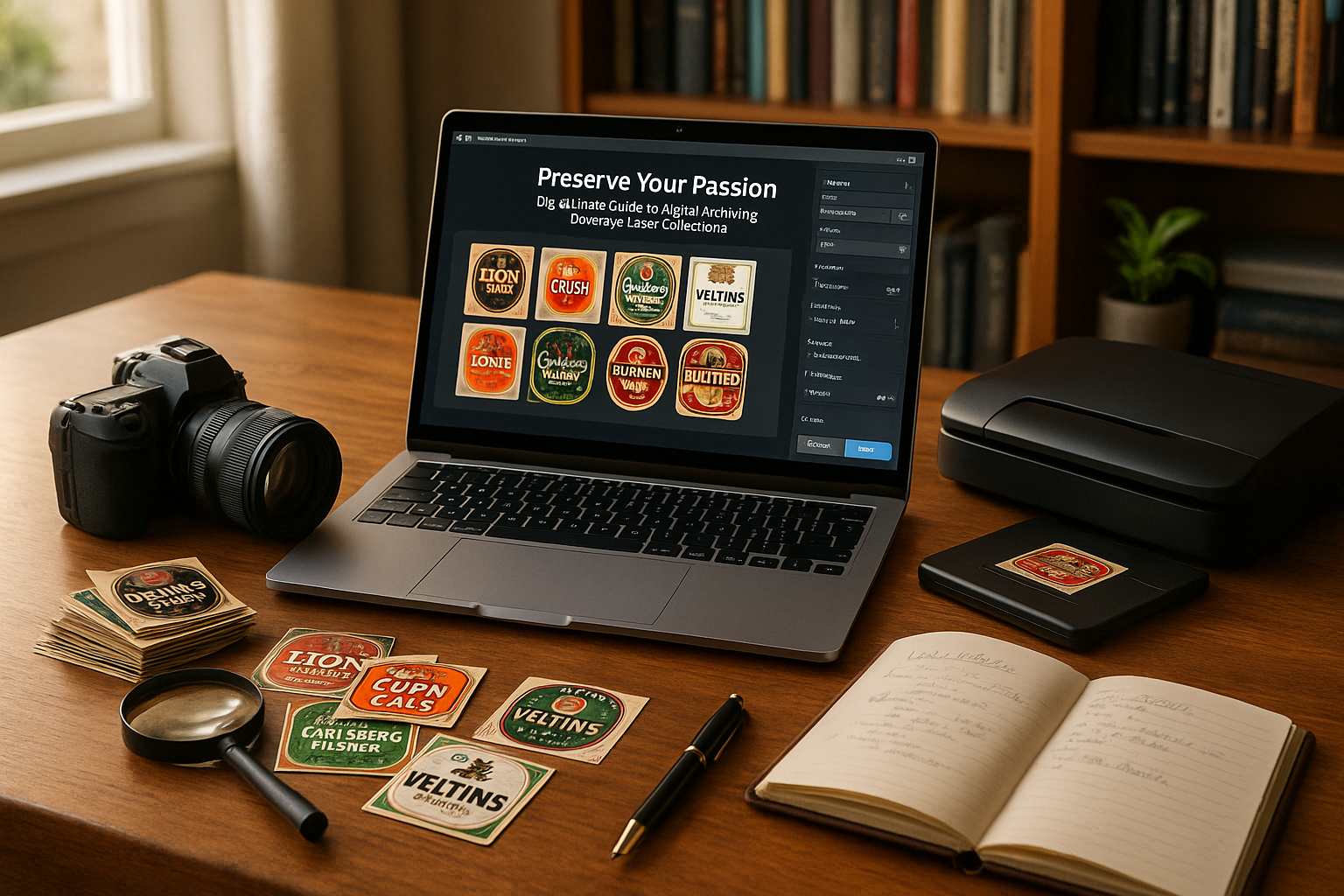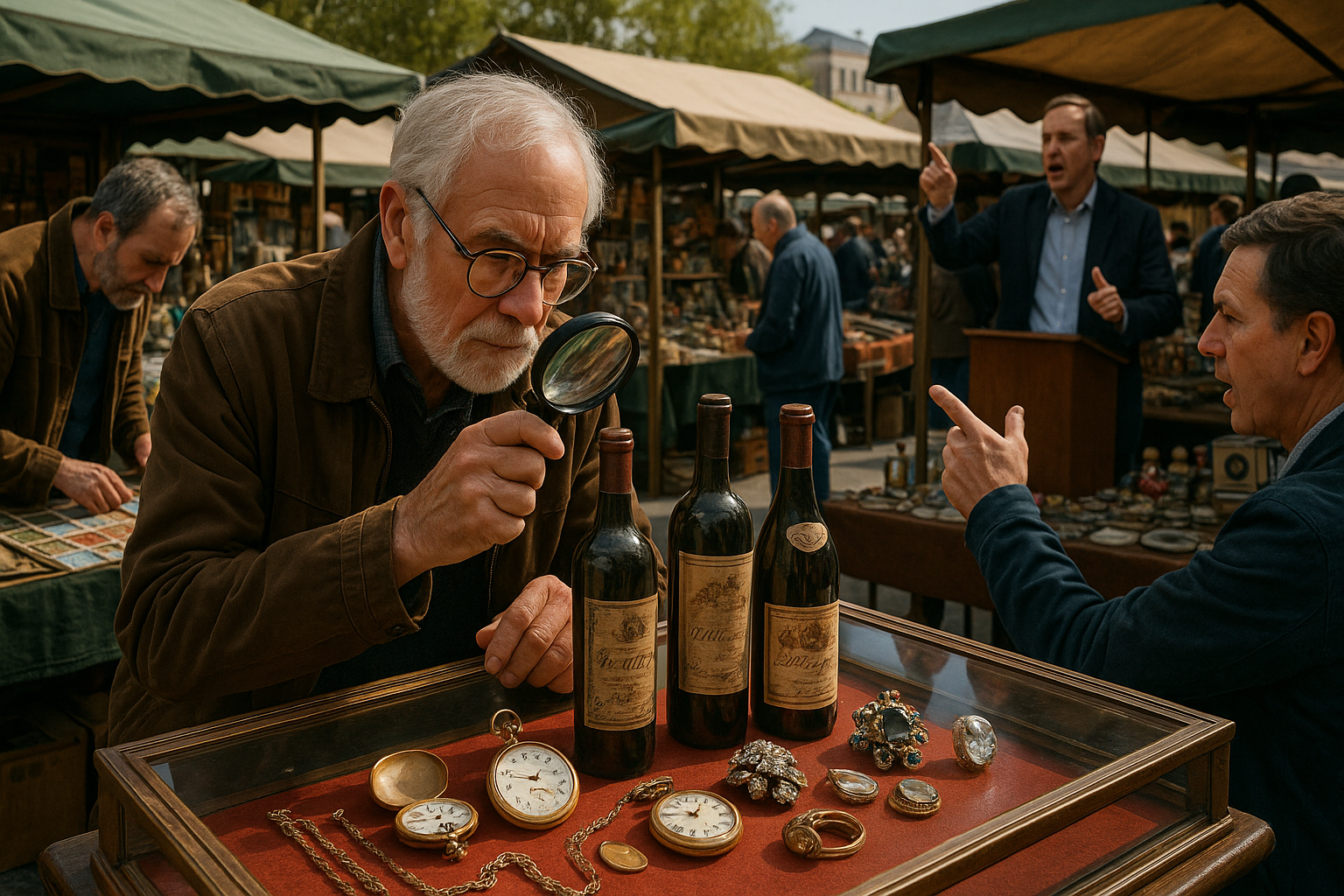In the dimly lit corners of history, where the shadows of legality and innovation intertwine, lies a chapter that has long captivated the imagination of historians, sociologists, and cultural enthusiasts alike. The era of alcohol prohibition in the early 20th century is often painted with broad strokes of speakeasies, flappers, and a burgeoning jazz scene. Yet, beneath this vibrant tapestry of rebellion and revelry, a quieter, more resilient form of brilliance was brewing — the rise of underground labels. These clandestine ventures not only kept the spirits flowing but also played a pivotal role in shaping the culture of an era defined by its thirst for both change and a good drink. 🍸
The story of bootlegged brilliance is one of ingenuity and audacity. As the Volstead Act tightened its grip on legal alcohol production and distribution, a new breed of entrepreneurs emerged, undeterred by the law and driven by the insatiable demand for their forbidden wares. These underground labels were more than mere bootleggers; they were pioneers, blending tradition with innovation to create products that tantalized the taste buds and defied convention. From makeshift distilleries hidden in basements to secret transportation routes that spanned the nation, the clandestine operations of these labels were nothing short of remarkable.
Yet, it wasn’t just about the alcohol itself. These underground labels became cultural touchstones, shaping the social dynamics of the era. They gave rise to a unique subculture where the lines between legality and morality blurred, and where the spirit of entrepreneurship flourished in the face of adversity. The speakeasies that served as their outlets were not just places to drink but were vibrant social hubs where people from all walks of life mingled, ideas were exchanged, and new cultural norms were forged. In these hidden venues, the underground labels found a home, and their stories became intertwined with the cultural fabric of the time.
This exploration into the world of underground labels during prohibition will delve into the ingenious methods these clandestine operations employed to evade the law, the cultural impact they had on society, and the enduring legacy they left behind. We’ll journey through the clandestine networks that spread these illicit products far and wide, examine the creative branding that helped these labels gain a foothold in a saturated black market, and uncover the stories of the colorful characters who risked it all for a taste of freedom. 🚀
The Historical Context of Alcohol Prohibition
The era of alcohol prohibition in the United States, commonly referred to as the “Prohibition Era,” lasted from 1920 to 1933 and was a time of significant social and economic change. The 18th Amendment to the United States Constitution, coupled with the Volstead Act, made the production, transport, and sale of alcohol illegal across the country. This legislation aimed to curb the social ills associated with excessive drinking, including crime and corruption. However, the unintended consequence was the emergence of a complex underground economy dedicated to the manufacture and distribution of alcohol. 📜
The rise of underground labels during prohibition was fueled by both a public demand for alcohol and the ingenuity of individuals who saw an opportunity in the newly created black market. These underground operations, often referred to as “bootlegging,” involved the production of illicit alcohol and its clandestine distribution through speakeasies, illegal bars that became cultural icons of the era. Despite the legal risks, bootleggers thrived, often using creative methods to disguise their operations and evade law enforcement. Many of these underground labels became synonymous with rebellion and the fight against government control over personal liberties.
This era also witnessed a significant cultural shift, with the jazz age and the roaring twenties providing a backdrop to the burgeoning underground alcohol industry. Speakeasies became the hub of nightlife, where jazz music and dancing flourished alongside the consumption of illicit spirits. The underground labels of this period were not just about providing alcohol but also about defining a cultural movement that celebrated individualism and defied societal norms. To understand the rise of these labels, it’s essential to delve into the socio-political landscape of the time and the economic motivations that drove this underground economy. 🍸
The Role of Underground Labels in Prohibition
Underground labels played a crucial role in sustaining the supply of alcohol during prohibition. These labels were often small-scale operations, some of which evolved into significant enterprises with complex distribution networks. The producers behind these labels were resourceful, using a variety of techniques to manufacture spirits in secret. Many operated out of basements, barns, and secluded rural areas to avoid detection by law enforcement. The ingenuity of these operations was remarkable, with some employing chemists and skilled distillers to ensure the quality and authenticity of their products.
One of the key strategies employed by underground labels was the creation of counterfeit versions of popular legitimate brands. These bootleggers understood the consumer’s desire for familiar products and sought to replicate the taste and branding of well-known alcohols. This practice not only catered to the existing demand but also allowed bootleggers to command higher prices for their products. In doing so, they effectively created a parallel market that operated with surprising efficiency, given the constraints and risks involved.
Additionally, underground labels often relied on innovative marketing tactics to attract customers. Given the illicit nature of their operations, traditional advertising was not an option. Instead, they used word-of-mouth, secretive invitations, and exclusive parties to promote their brands. This underground marketing not only increased demand but also enhanced the allure and mystique of these illicit products. Bootleggers often positioned their brands as luxury items, capitalizing on the exclusivity and danger associated with consuming illegal alcohol. This strategy was particularly effective in appealing to the affluent and rebellious youth of the era, who were eager to defy societal norms and embrace the thrill of prohibition culture. 🚀
Economic Impacts and Social Dynamics
The prohibition era significantly reshaped the American economy, with underground labels playing a pivotal role in this transformation. The illicit alcohol industry became a multi-billion-dollar enterprise, employing thousands of individuals across various sectors, from production and distribution to marketing and sales. This underground economy not only provided jobs but also spurred innovation in production techniques and logistics, as bootleggers sought to outwit law enforcement and meet consumer demand.
The economic impact of underground labels was felt at both local and national levels. In many regions, the income generated from bootlegging activities helped sustain communities during the economic downturns of the 1920s and early 1930s. This economic activity also had a broader societal impact, influencing everything from real estate to entertainment. Speakeasies, often hidden in plain sight, became cultural hotspots that attracted a diverse clientele, from working-class patrons to wealthy socialites. The thriving underground scene contributed to the flourishing of the jazz age, with live music and dance becoming integral components of the speakeasy experience. 🕺
Moreover, the rise of underground labels and the widespread disregard for prohibition laws revealed deep-seated tensions within American society. Many viewed prohibition as an overreach of government authority, leading to widespread defiance and a lack of enforcement of the law. This period highlighted the cultural divide between urban and rural America, with urban areas more likely to flout prohibition laws and embrace the illicit alcohol culture. The social dynamics of the time were complex, with underground labels serving as symbols of resistance and rebellion against the status quo.
Table of Economic Impact
| Sector | Impact |
|---|---|
| Employment | Creation of jobs in production, distribution, and marketing of illicit alcohol. |
| Real Estate | Increased demand for secret locations and spaces suitable for speakeasies and storage. |
| Entertainment | Growth of jazz music and dance culture, with speakeasies serving as cultural hubs. |
| Local Economy | Boost to local economies through the circulation of money generated by bootlegging activities. |
The Legacy of Underground Labels
The end of prohibition in 1933, marked by the ratification of the 21st Amendment, did not spell the end for all underground labels. Many bootleggers had developed significant expertise in alcohol production and distribution and transitioned to legitimate businesses. Some of today’s most well-known alcohol brands have their roots in the ingenuity and resilience of prohibition-era bootleggers. These brands capitalized on the reputations they had built during prohibition, often leveraging their mystique and exclusivity to capture market share in the post-prohibition landscape.
Furthermore, the legacy of underground labels extends beyond the realm of alcohol. The prohibition era demonstrated the futility of trying to legislate morality and personal behavior, lessons that continue to resonate in contemporary debates over issues such as drug legalization and personal freedoms. The cultural impact of prohibition is also enduring, with speakeasies and the jazz age continuing to capture the public imagination. The era’s influence can be seen in modern-day cocktail culture, with bartenders and mixologists drawing inspiration from the creativity and craftsmanship of prohibition-era drinks.
Today’s craft alcohol movement, with its emphasis on small-batch production and artisanal quality, can trace its roots back to the practices of underground labels. The focus on quality, innovation, and marketing that defined these labels during prohibition is mirrored in the ethos of contemporary craft producers. The story of underground labels is a testament to human ingenuity and the desire for self-expression, offering valuable insights into the intersection of culture, economics, and law. For a deeper understanding of this fascinating era, watch this insightful video: The Real History of Prohibition – History Channel.
Impactful Figures and Stories
- Al Capone: One of the most infamous figures of the prohibition era, Capone’s criminal empire was largely built on bootlegging operations in Chicago.
- Mabel Walker Willebrandt: As the Assistant Attorney General, Willebrandt played a key role in enforcing prohibition laws, becoming a formidable opponent to bootleggers.
- Izzy and Moe: Prohibition agents Isidor “Izzy” Einstein and Moe Smith became legendary for their creative and humorous methods of capturing bootleggers.
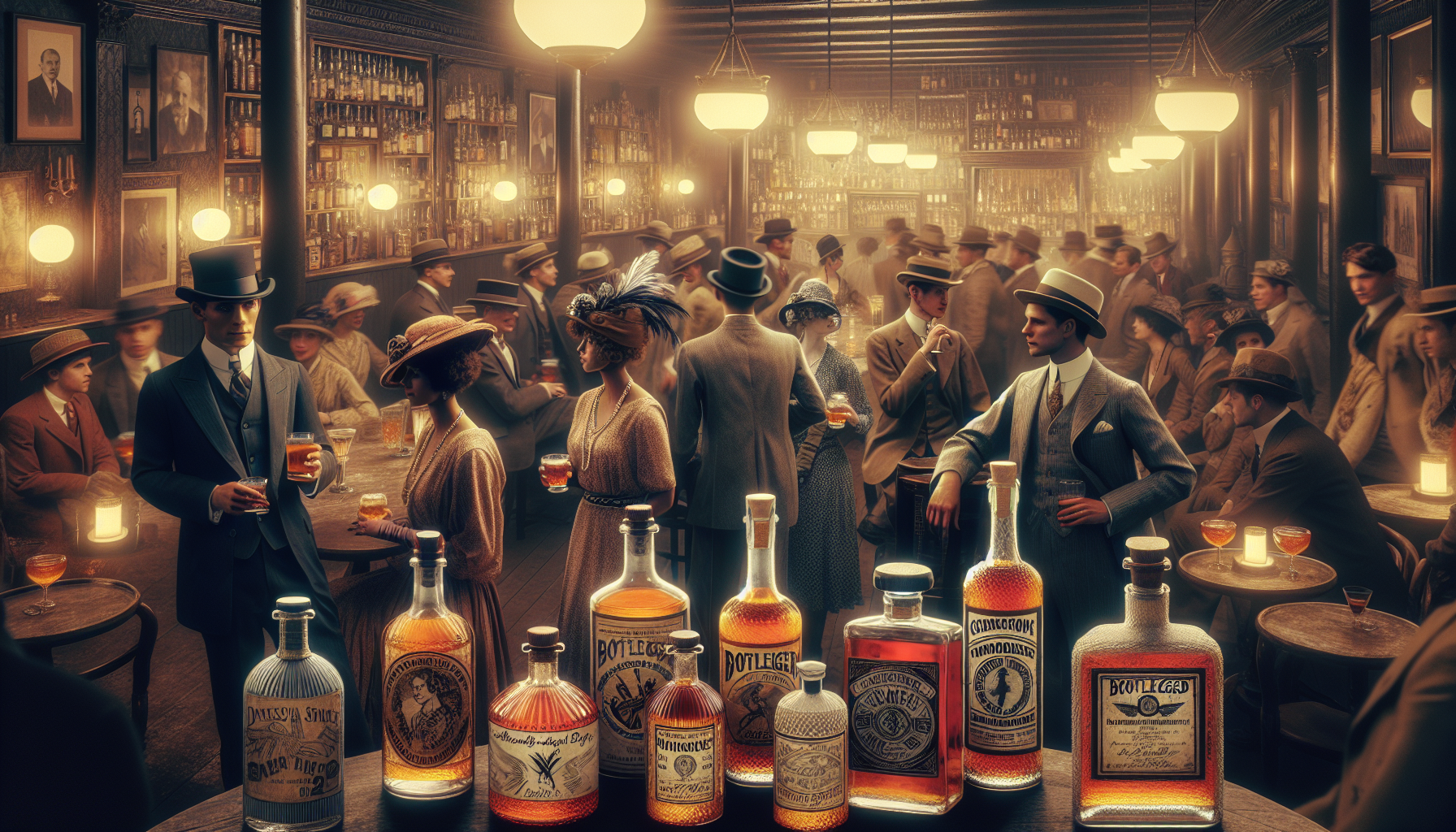
Conclusion
In conclusion, “Bootlegged Brilliance: The Rise of Underground Labels in Alcohol Prohibition Culture” delves into a fascinating era of American history that transformed not only the landscape of the alcohol industry but also left an indelible mark on societal norms and cultural practices. Throughout this exploration, we’ve uncovered how the Prohibition era, rather than stifling alcohol consumption, birthed an underground market that thrived on innovation, resilience, and creativity. The rise of underground labels during this period was a testament to the human spirit’s ingenuity in the face of adversity.
The article highlighted several key points, starting with the historical context of Prohibition and its intended goals. Initially, the Prohibition Act sought to curb the social ills associated with alcohol consumption. However, it inadvertently spurred the creation of a complex network of bootleggers, speakeasies, and underground distilleries. This underground market was characterized by its covert operations, secretive distribution channels, and the unique branding of illicit alcoholic products.
One of the most intriguing aspects of this era was the emergence of underground labels. These labels, often crafted with meticulous attention to detail, played a crucial role in differentiating products in a saturated black market. They not only conveyed the quality and origin of the product but also reflected the cultural and social narratives of the time. The art and design of these labels often included coded symbols and messages, which added an element of mystique and allure to the products.
Moreover, the article examined the cultural impact of these underground labels. They became symbols of rebellion and resistance against government-imposed restrictions. Speakeasies, the clandestine venues where these products were consumed, became hotspots of cultural and social exchange, significantly influencing music, fashion, and entertainment. The jazz age, with its exuberant expression and defiance of traditional norms, was intricately linked to these underground venues.
The ingenuity of those involved in the bootlegging business also extended to the methods of production and distribution. From hidden compartments in vehicles to secret tunnels and innovative fermentation techniques, bootleggers showcased remarkable adaptability. These creative strategies ensured the steady flow of alcohol, despite the ever-present threat of law enforcement.
As we reflect on the significance of this era, it is important to recognize the broader implications of the Prohibition and the rise of underground labels. This period serves as a powerful reminder of the complexities of legislating morality and the unintended consequences of blanket prohibitions. The creativity and resilience demonstrated by those who navigated the challenges of Prohibition continue to inspire contemporary discussions about regulation, personal freedom, and entrepreneurial spirit.
In reinforcing the importance of this topic, it’s crucial to acknowledge that the stories of those who lived through Prohibition offer valuable lessons for today. They remind us that innovation often springs from the most challenging circumstances and that cultural movements can emerge from the unlikeliest of places. The Prohibition era, with its underground labels and vibrant subcultures, serves as a testament to the power of human creativity and adaptability.
As you reach the end of this exploration, consider the parallels between the Prohibition era and current societal challenges. Reflect on how creativity and resilience can drive change and inspire new ways of thinking. Engage with this content by sharing your thoughts and insights, either by commenting below or discussing it with others. The lessons from this unique historical period are as relevant today as they were nearly a century ago.
I encourage you to share this article with others who might find the topic intriguing or who might draw inspiration from the resilience and creativity demonstrated during the Prohibition era. Let’s continue the conversation and explore how the spirit of innovation can address contemporary challenges. Your engagement and insights are valuable contributions to this ongoing dialogue. 🍸
For further reading on the topic, consider exploring these active resources:
1. Smithsonian Magazine on Prohibition and Speakeasies
2. PBS – American Experience: Prohibition
3. National Archives – The Volstead Act
Thank you for joining this exploration of “Bootlegged Brilliance.” May it inspire you to think creatively and critically about history, culture, and the spirit of innovation. Cheers to the lessons of the past and the potential of the future! 🥂
Toni Santos is a visual poet and botanical dreamweaver, archiving the ephemeral beauty of dreams through nature’s delicate language.
In his artistic universe, every petal, vine, and root becomes a memory—an echo from the subconscious—preserved in time like pages from an ethereal journal. Toni treats plants not just as living beings, but as dream-symbols: vessels of forgotten feelings, silent wishes, and secret stories waiting to unfold.
His work is rooted in the belief that nature holds the vocabulary of dreams. Through botanical compositions, symbolic floral creations, and enchanted visual studies, he gives form to the unseen — the moment between sleep and wakefulness, where memory fades and imagination begins.
As the visionary behind Vizovex, Toni curates collections that feel like fragments of a dreamscape: moss-filled glass jars, mythic flowers, ancient botanical symbols reimagined. These creations invite you to explore your inner worlds and reawaken your sense of wonder.
His work is a tribute to:
The dreamlike language of plants and natural symbols.
The quiet messages found in forgotten moments.
The art of recording the soul’s memories in organic form.
Whether you’re a seeker of meaning, a lover of myth, or someone who drifts between the symbolic and the real, Toni welcomes you to explore an archive of dreams — one petal, one relic, one timeless whisper at a time


